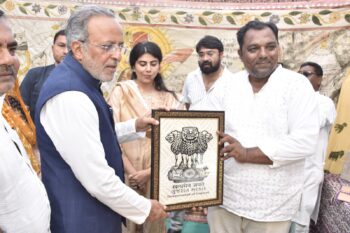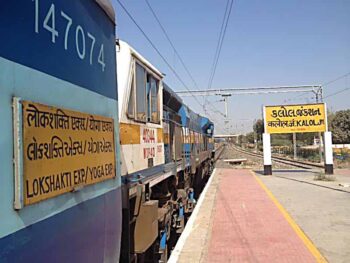PM Modi Singapore visit: A Boon to Gujarat Semiconductor Industry
Gandhinagar, PM Modi visited Singapore on 05 Sep 2024 and met his counterpart Mr Lawrence Wong. Both the countries elevated their bilateral ties to a “Comprehensive Strategic Partnership” and signed four MoUs, most important the MoU on Cooperation is Semiconductor.
For a normal reader the question arises that what is the interest of PM of largest democracy of the world to visit a country which is half of the size of even Ahmadabad. As quoted from remarks by Prime minister during the meeting with PM of Singapore “Singapore is not merely a partner country, it serves as an inspiration for every developing nation. We also aim to create multiple ‘Singapore’ within India. Collaborative initiatives have been identified in areas such as skilling, digitalisation, mobility, advanced manufacturing, semiconductors and AI, healthcare, sustainability and cybersecurity. Singapore is also an important facilitator of our Act East policy.” This summarises the importance of Singapore.
Prime Minister Narendra Modi accompanied by his Singapore counterpart Lawrence Wong on Thursday visited a leading Singaporean company AEM Holdings in the semiconductor and electronics sector and discussed ways for collaboration in this critical industry. Both the leaders were briefed about the company’s role in the global semiconductor value chain, its operations and plans for India. MEA India gave an official response after the visit stating that “Boosting ties in the area of advanced manufacturing. PM Narendra Modi and PM Lawrence Wong visited AEM Holdings Ltd, a leading Singaporean company in the semiconductors and electronics sector. The leaders held discussions with the stakeholders on opportunities for collaboration between India and Singapore in the field of semiconductors,”
Singapore has a long history of manufacturing in the semiconductor space, whether it is in terms of the actual production of wafers or testing or designing. Over the past few decades, Singapore has positioned itself as a semiconductor manufacturing and research hub in Asia, attracting major multinational companies like Intel, Micron, and Global Foundries. One of the key factors behind Singapore’s success in the semiconductor field is its business-friendly environment, supported by strong intellectual property laws, transparent regulations, and government incentives. The Economic Development Board (EDB) of Singapore has played a crucial role in fostering the growth of the semiconductor sector by encouraging foreign investment and providing tax benefits to companies setting up advanced manufacturing facilities.
Additionally, Singapore’s focus on innovation and R&D has been pivotal. The country hosts cutting-edge research centres like the Institute of Microelectronics, which drives innovation in semiconductor technology. This has helped Singapore build capabilities in advanced chip design, manufacturing, and packaging technologies
In all these areas of Semiconductor manufacturing, Gujarat has laid a particular focus on developing capabilities at a very rapid pace. Singapore being a small country with limited land is looking for places where they want to expand, and India especially Gujarat is presenting itself as a natural destination for that. So across this entire spectrum of the semiconductor ecosystem, India finds great convergences with Singapore, and Gujarat can see a very rapid growth in joint efforts in this direction..
Gujarat is rapidly emerging as a hub for semiconductor manufacturing, driven by key factors such as government initiatives, strategic location, and industrial infrastructure. The state has attracted significant investment as part of India’s push to develop a domestic semiconductor ecosystem under the “Make in India” initiative. Additionally, Gujarat’s existing industrial ecosystem in electronics, automotive, and renewable energy makes it an attractive location for semiconductor production. Government support through the Semicon India Program, which offers financial incentives and subsidies for chip manufacturing is also praise worthy. The state’s skilled workforce, strong power infrastructure, and port access for global exports also play a critical role. Gujarat’s proactive governance, policy reforms, and focus on technology-led industries position it as a key player in India’s ambitions to reduce dependence on imports and become a global hub in the semiconductor supply chain.
The establishment of Dholera Special Investment Region (SIR) as a potential semiconductor manufacturing base is a key development. Micron, Tata, and CG Power have already commenced work on the Semiconductor manufacturing facilities in Gujarat. In a move towards building a robust semiconductor ecosystem, the Union Cabinet, led by Prime Minister Narendra Modi, recently approved the proposal for Kaynes Semicon Pvt Ltd to establish a semiconductor manufacturing unit in Sanand, Gujarat, the fifth semiconductor unit to be approved by the central government under the Rs 76,000-crore India Semiconductor Mission (ISM).
Skilling of technical manpower for upcoming semiconductor Industry is also becoming very important. Macron has selected students from various Universities of Gujarat and sent them to Singapore to create trainers and hire skilled manpower. Universities like Pandit Deendayal Energy University are on verge of creating skill training infrastructure, within University, with help of both Micron and National Skill Development Corporation.
We can safely conclude that, Singapore expertise in Semiconductor and Gujarat interest and investment in Semiconductor manufacturing will gain a lot from each other and mutual cooperation between Singapore and Gujarat will be a boon for Semiconductor industry not only for Gujarat but for the complete nation. Mr Modi such visits and push in the field will certainly help. As per the market experts, the global semiconductor market size was valued at USD 611.35 billion in 2023 and is projected to grow from USD 681.05 billion in 2024 to USD 2062.59 billion by 2032. India has joined the race very late but “better late than never”, Gujarat in on the path to extract pie out of this share.
-By Col Dr Rakesh Kumar (Registrar Pandit Deendayal Energy University)




